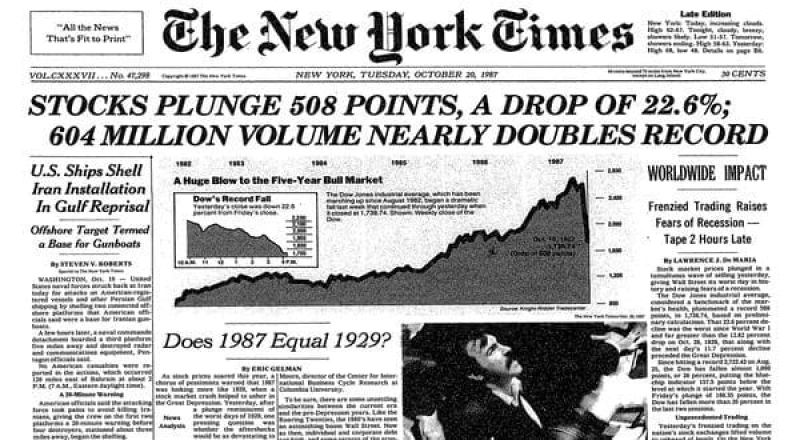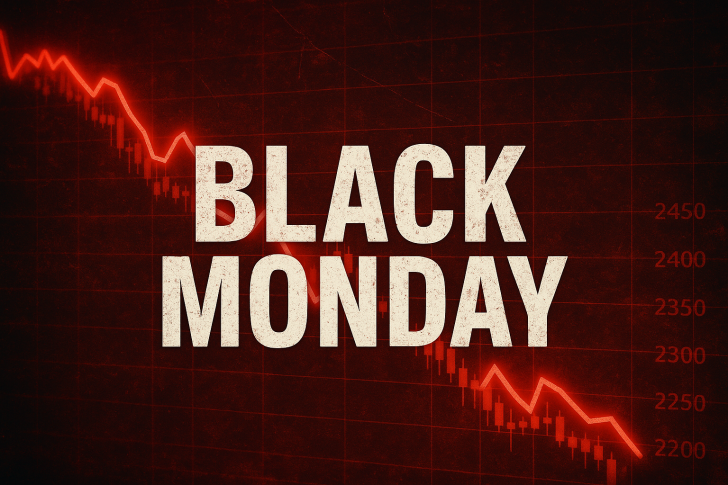● Today marks 38 years since Black Monday — October 19, 1987 — when the Dow Jones Industrial Average crashed by 508 points (22.6%) and the S&P 500 fell 20.5%, wiping out trillions in market value. As analyst Stock Sharks noted, it remains the largest one-day market drop in U.S. history, a stark reminder that investor psychology and systemic risk can collide with devastating speed.

● The crash sent shockwaves through global markets within hours. The speed and scale stunned everyone—policymakers, traders, economists. It exposed how vulnerable markets had become to program trading and early algorithmic selling, where automated portfolio insurance strategies amplified the selloff as prices spiraled downward.
● In response, regulators rolled out "circuit breakers"—automatic trading halts triggered when losses hit certain levels. The idea was to give investors breathing room during panic selling. But critics worried these safeguards might create a false sense of security, potentially making markets more fragile if traders assumed they'd always be protected from sharp drops.
● The aftermath sparked debates about tighter oversight of automated systems and higher margin requirements to curb over-leveraged trading during volatile periods. The crash also pushed central banks and governments to coordinate more closely on liquidity measures and crisis response, setting the stage for how authorities would handle future market stress.
● Despite erasing years of gains in a single day, the economy proved resilient. The Dow clawed back to pre-crash levels within two years. But the event left a lasting mark—reshaping market regulation, risk modeling, and how we think about systemic vulnerabilities in an increasingly automated financial system.
 Peter Smith
Peter Smith

 Peter Smith
Peter Smith


